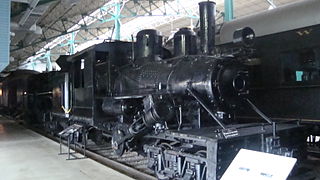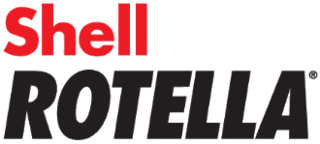A lubricant is a substance that helps to reduce friction between surfaces in mutual contact, which ultimately reduces the heat generated when the surfaces move. It may also have the function of transmitting forces, transporting foreign particles, or heating or cooling the surfaces. The property of reducing friction is known as lubricity.

Motor oil, engine oil, or engine lubricant is any one of various substances used for the lubrication of internal combustion engines. They typically consist of base oils enhanced with various additives, particularly antiwear additives, detergents, dispersants, and, for multi-grade oils, viscosity index improvers. The main function of motor oil is to reduce friction and wear on moving parts and to clean the engine from sludge and varnish (detergents). It also neutralizes acids that originate from fuel and from oxidation of the lubricant (detergents), improves the sealing of piston rings, and cools the engine by carrying heat away from moving parts.

A hydraulic fluid or hydraulic liquid is the medium by which power is transferred in hydraulic machinery. Common hydraulic fluids are based on mineral oil or water. Examples of equipment that might use hydraulic fluids are excavators and backhoes, hydraulic brakes, power steering systems, automatic transmissions, garbage trucks, aircraft flight control systems, lifts, and industrial machinery.

A Climax locomotive is a type of geared steam locomotive built by the Climax Manufacturing Company, of Corry, Pennsylvania. These had two steam cylinders attached to a transmission located under the center of the boiler, which sent power to driveshafts running to the front and rear trucks. Some 1000-1100 were built in three classes - A, B, and C - between 1888 and 1928.

Synthetic oil is a lubricant consisting of chemical compounds that are artificially modified or synthesised. Synthetic lubricants can be manufactured using chemically modified petroleum components rather than whole crude oil, but can also be synthesized from other raw materials. The base material, however, is still overwhelmingly crude oil that is distilled and then modified physically and chemically. The actual synthesis process and composition of additives is generally a commercial trade secret and will vary among producers.
The viscosity index (VI) is an arbitrary, unit-less measure of a fluid's change in viscosity relative to temperature change. It is mostly used to characterize the viscosity-temperature behavior of lubricating oils. The lower the VI, the more the viscosity is affected by changes in temperature. The higher the VI, the more stable the viscosity remains over some temperature range. The VI was originally measured on a scale from 0 to 100; however, advancements in lubrication science have led to the development of oils with much higher VIs.
Grease is a solid or semisolid lubricant formed as a dispersion of thickening agents in a liquid lubricant. Grease generally consists of a soap emulsified with mineral or vegetable oil.
Oil analysis (OA) is the laboratory analysis of a lubricant's properties, suspended contaminants, and wear debris. OA is performed during routine predictive maintenance to provide meaningful and accurate information on lubricant and machine condition. By tracking oil analysis sample results over the life of a particular machine, trends can be established which can help eliminate costly repairs. The study of wear in machinery is called tribology. Tribologists often perform or interpret oil analysis data.

Dexron is the trade name for a group of technical specifications for automatic transmission fluid (ATF) created by General Motors (GM). The name was first registered as a trademark and later evolved into a brand of GM. GM licenses the name and specifications to companies that manufacture the fluid and sell it under their own brand names. Not all Dexron fluids are licensed by GM for reselling under another brand name. To be licensed, the product must have a license number that begins with the letters B through J and include a "Dexron Approved" sticker on its container. Like many automobile manufacturers, GM uses transmissions sourced from other suppliers or transmission manufacturers around the world; many of these may use their own unique fluid.
AW additives, or antiwear additives, are additives for lubricants to prevent metal-to-metal contact between parts of gears.

Automatic transmission fluid (ATF) is a type of hydraulic fluid used in vehicles with automatic transmissions. It is typically coloured red or green to distinguish it from motor oil and other fluids in the vehicle.

A spiral bevel gear is a bevel gear with helical teeth. The main application of this is in a vehicle differential, where the direction of drive from the drive shaft must be turned 90 degrees to drive the wheels. The helical design produces less vibration and noise than conventional straight-cut or spur-cut gear with straight teeth.

Shell Rotella is a line of heavy-duty engine lubrication products produced by Shell plc. The line includes engine oils, gear oils and coolants. The oil carries both the American Petroleum Institute (API) diesel "C" rating as well as the API gasoline engine "S" rating. Ratings differ based on the oil. Rotella oils, like the T3 15W-40, meet both the API CJ-4 and SM specifications, and may be used in both gasoline and diesel engines. However, it is formulated specifically for vehicles without catalytic converters, containing phosphorus levels beyond the 600–800 ppm range. Therefore, Rotella is not recommended for gasoline vehicles with catalytic converters due to the higher risk of damaging these emission controls. Newer formulations of Rotella T6 however are API SM rated as safe for pre-2011 gasoline vehicles.
Oil additives are chemical compounds that improve the lubricant performance of base oil. The manufacturer of many different oils can utilize the same base stock for each formulation and can choose different additives for each specific application. Additives comprise up to 5% by weight of some oils.

Liqui Moly GmbH is a German company specializing in oils, lubricants ,and additives. As of January 1, 2018, Liqui Moly is part of the Würth Group ,which bought the remaining shares of the previous majority holder and CEO Ernst Prost. From 2018 to 2022, Günter Hiermaier was the second managing director alongside long-time managing director Ernst Prost. Prost retired in February 2022 on the occasion of his 65th birthday. Günter Hiermaier then served as the sole managing director of Liqui Moly until 2022. The Ulm-based company's long-time commercial director, Uli Weller, became the group's second managing director at the turn of 2023.
The F35 is a Saab-designed five-speed manual transmission built in Saab’s Gothenburg, Sweden, powertrain plant. This extensively tested manual transmission was originally introduced in the 1984 Saab 9000, and was later used in the Saab 900, 9-3 and 9-5, Saturn Ion Redline, Chevrolet Cobalt SS, Chevrolet HHR SS and various GM/Opel transverse engine front-wheel drive applications.
Base oils are used to manufacture products including lubricating greases, motor oil and metal processing fluids. Different products require different compositions and properties in the oil. One of the most important factors is the liquid’s viscosity at various temperatures. Whether or not a crude oil is suitable to be made into a base oil is determined by the concentration of base oil molecules as well as how easily these can be extracted.
The mini-rotary viscometer is a device used to measure the pumpability of an engine oil at low temperatures. Engine oils must meet viscometric standards including those determined by the MRV in order to be classifiable within SAE J300 viscosity grades. The requirement was added after the winters of 1980-81 and 1981-82 caused major pumpability field problems in the US and Europe.

SAE J300 is a standard that defines the viscometric properties of mono- and multigrade engine oils, maintained by SAE International. Key parameters for engine oil viscometrics are the oil's kinematic viscosity, its high temperature-high shear viscosity measured by the tapered bearing simulator, and low temperature properties measured by the cold-cranking simulator and mini-rotary viscometer. This standard is commonly used throughout the world, and standards organizations that do so include API and ILSAC, and ACEA.
SAE J306 is a standard that defines the viscometric properties of automotive gear oils. It is maintained by SAE International. Key parameters for this standard are the kinematic viscosity of the gear oil, the maximum temperature at which the oil has a viscosity of 150,000 cP, and a measure of its shear stability through the KRL test.










